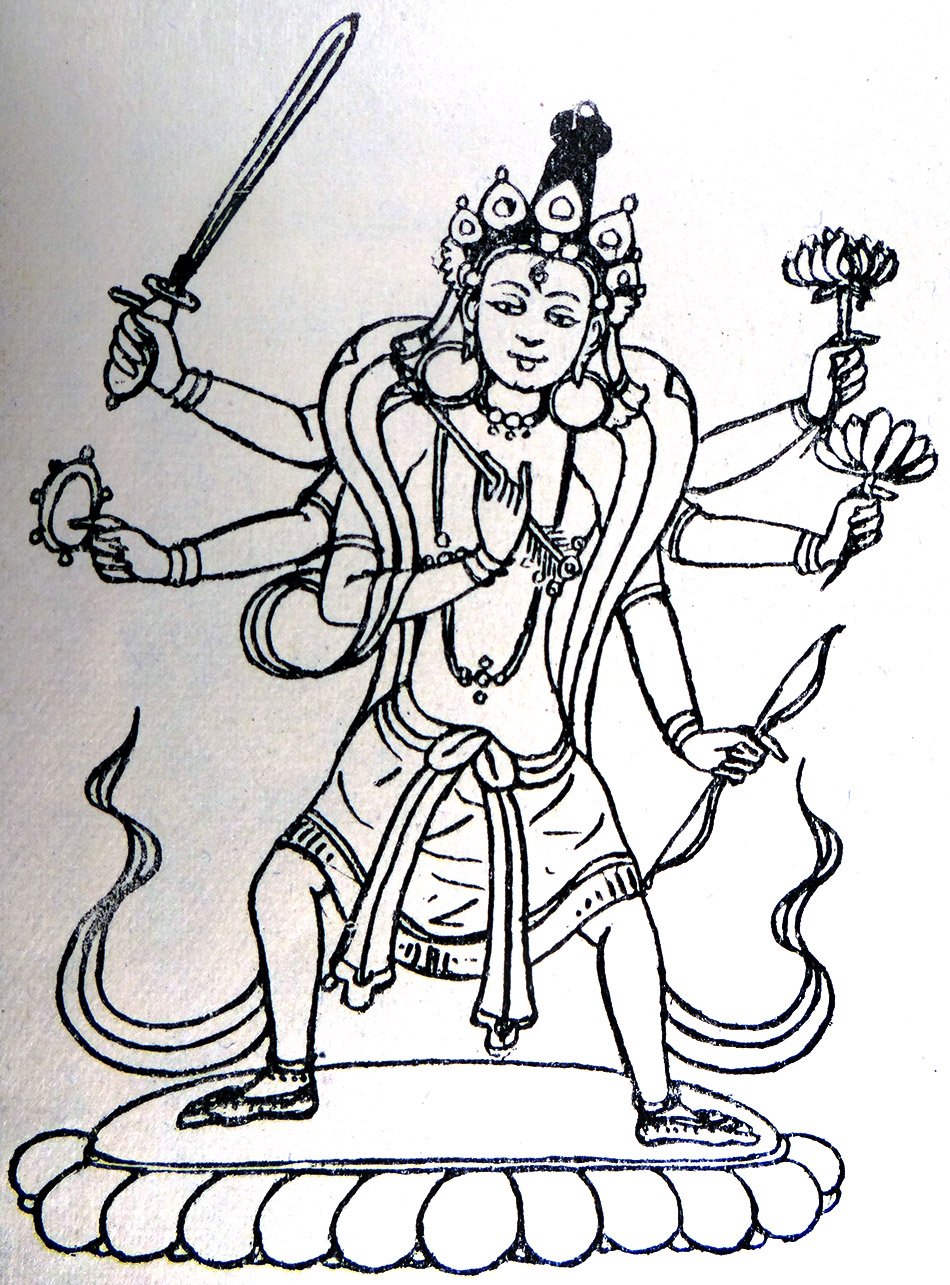The Indian Buddhist Iconography
by Benoytosh Bhattachacharyya | 1958 | 51,392 words | ISBN-10: 8173053138 | ISBN-13: 9788173053139
This page contains an iconography image of Manjushri Vajrananga and represents figure 78 of the book Indian Buddhist Iconography, based on extracts of the Sadhanamala English translation. These plates and illustrations represent either photographs of sculptures or line-drawing reproductions of paintings or other representations of Buddhist artwork.
Figure 78 - Mañjuśrī Vajrānaṅga

Figure 78: Vajrānaṅga
This form of Mañjuśrī bearing the image of Akṣobhya on the crown is known as Vajrānaṅga, who is worshipped in the Tantric rite of Vaśīkaraṇa, or bewitching men and women. His complexion is yellow, he is in the prime of youth, and bears the image of Akṣobhya on his crown. The two principal hands hold the fully expanded bow of flowers charged with the arrow of a lotus bud. The four remaining hands carry the sword and the looking-glass in the two right hands, while the two left carry the lotus and the Asoka bough with red flowers. In another Sādhana the Aśoka bough is replaced by Kaṅkelli flowers. He may have an alternative form with four hands, in which case the hands carrying the mirror and the Aśoka bough are dropped.
Vajrānaṅga as the name implies, is the Buddhist God of Love,—the prototype of the Hindu God Madana—in the Buddhist Pantheon. The flowery bow and the arrow of flowers are strikingly common to both. Unlike the Hindu Anaṅga, however, several other weapons besides these are also attributed to the Buddhist God of Love, and an account is given below of how he makes use of them. It is said in the Sādhanamālā that in the act of bewitching a woman, the worshipper should imagine himself as piercing her bosom with the arrow of the lotus bud. The woman falls flat on the ground in a swoon, whereupon the worshipper should visualise her legs as being tied by the chain which is the bow. Then he should imagine that the noose of the lotus stalk is flung round her neck, and she is drawn to his side. Thereupon, he should think that he is striking her with the Aśoka bough, is frightening her with the sword, and subsequently he has only to confront her with the mirror by which she is completely subjugated
Fig. 78 illustrates a Nepalese drawings of the deity.
Colour: yellow;
Āsana: pratyālīḍha;
Hands: six or four;
